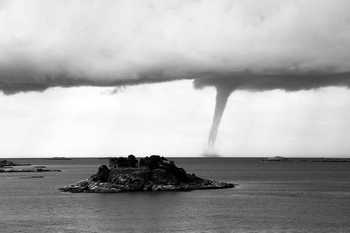In the midst of a global pandemic, economic recession, and widespread civic protests and social justice demonstrations, there is certainly more than enough turmoil and uncertainty out there for brands and businesses to think about.
But with hurricane season once again upon us, it’s important for anyone in vulnerable areas to take the time to plan and prepare for another category of potential disaster. That work is especially critical now, as forecasters with NOAA’s Climate Prediction Center are predicting a stronger and more active hurricane season for 2020.
What follows are some basic reminders and best practices guidance about how business owners and operators can and should be approaching the preparation and disaster recovery process.
A proactive approach to disaster preparation is necessary
One of the most common visuals in the days and hours prior to a hurricane or tropical storm making landfall is that of homeowners and businesses nailing up plywood or storm shutters over windows and securing sites and structures. While this work is important, much of the most critical planning and preparation takes place behind the scenes, with pre-planning work to create a comprehensive business continuity and disaster recovery plan.
One of the most common missteps in planning for and recovering from a natural disaster is waiting too long, and taking a reactive, instead of a proactive approach. Not only will an established hurricane plan enable you to move faster and more efficiently to prepare for a storm, it will give you a sizable and potentially dramatic leg up on the recovery process. In the chaotic days, weeks, months, and even years in the wake of a disruptive and damaging storm, that early planning could mean the difference between a business surviving or going under.
Position assets ahead of time
One of the most important ways in which an established business continuity and disaster recovery plan enables business owners and operators to prepare for a storm is in positioning critical assets before winds and waters rise. The days prior to a storm making landfall are a critically important window. That’s when your advance planning and work begins to pay off, allowing for the speedy and strategic positioning of both material and personnel assets.
From a logistical standpoint, having generators, water, food, and other essentials in place is enormously valuable, and planning to secure facilities and assets can drastically reduce any issues with post-storm looting or scarcity. Both because of higher demand and potentially challenging conditions, assets are likely to be in short supply in the aftermath of a storm.
Travel may also be limited, making it vital to also put security teams in place before a storm hits. Those security assets can provide real-time intelligence reports about conditions on the ground (both during and after a storm) and can be deployed across facilities/locations.
That on-the-ground visibility speeds recovery, allowing storm response to be targeted and tactical. Security personnel can not only assist in securing a site in the wake of a storm but can help clients navigate the critical insurance/reimbursement process with damage reports, photographs, and other documentation.
Plan and practice before the crisis
A high-quality pre-storm business continuity and disaster recovery (BCDR) plan should encompass a total risk perspective (with contingency elements based on a sophisticated assessment of a business’s variable and structural risk profile). The most effective plans are crafted with a nuanced understanding of and accounting for customized priorities, and the threats and vulnerabilities unique to specific markets, regions and industries. Everything from local crime statistics and trends, to unique geographical considerations could affect your planning. Which is why counsel from trusted outside security experts is so valuable. A fresh set of experienced eyes can provide the outside perspective that might not be clear to those living and working there. The right professionals can not only help you understand those subtleties, they can help you play out the what-ifs, considering potential storm damage and impact, and using that information to inform planning priorities, resource allocation, and mitigation strategies.
Once you’re confident that an effective plan is in place, put it to the test. Until practiced and perfected with real-world run-throughs, any crisis management and mitigation strategy is only as good as the paper it’s printed on. Don’t make the first time you’re executing your plan be in the middle of a crisis.
Think worst-case-scenario
Pre-planning is even more critical when disasters are greater than anticipated. Try to avoid planning based on perceptions about response time and efficacy that may end up being overly optimistic. If those assumptions are proven to be invalid after a storm, your plan could be compromised. In Houston, for example, in the wake of Hurricane Harvey in 2017, large areas of the city were inaccessible without watercraft for an extended period of time after the storm.
Taking worst-case-scenarios into account is perhaps true now more than ever. In a nation and a world beset by additional pandemic pressures, heightened tensions and stresses in societies and systems create concerning new complications. They may even make looting more likely and disasters more disruptive.
Regardless of the size of the storm, plans should include elements of not only short-term response, but also long-term recovery. While no one wants to ever have to pull that long-term lever, the tragic example of Puerto Rico illustrates how the devastating impact of a large tropical storm can linger—not just for months, but for years. And while the official Atlantic hurricane season runs from June 1st to November 30th, a changing climate and warming seas have made damaging tropical storms a near year-round threat. The result is that an already significant source of risk is only growing larger, and the need for smarter and more strategic disaster planning and preparation is only growing more urgent.





